It seems only yesterday that I wrote with such pride about pulling up the anchor by hand – and me 70 years old if I’m a day (imagine how impressive it will be when I’m 80!).
You might have guessed I would live to regret this.
But from Falmouth to the Hebrides – the Isle of Man and North Wales, I hauled in the 20kg Rocna with its 10mm chain as if it was no more than a bath plug. Even in the dark depths of Loch Spelve, I got it up in the end.
Then I dropped it in Baltimore (the Irish one). Baltimore was this year’s destination for the Jester Challenge and the other singlehanders in small boats turned out to be such a convivial crowd and Bushe’s Bar served such a good pint of Guinness that I stayed for a week. Part of that week involved the gale which battered the Azores and Back fleet on their return to Plymouth.
One way and another, when the time came to weigh anchor and head back to the UK, it was well dug in. In fact, it was so well dug in that after an hour of grunting and revving, and nothing to show for it, the only possible explanation had to be that something had fouled it. I knew all about fouled anchors – this time last year in the Outer Hebrides, I’d had to call out a diver to get the thing out from under a ground chain. And this felt just the same – the identical, absolutely rock-solid resistance.
I’ll tell you the moral of this story now: Don’t make assumptions. Check your facts before shelling out for another diver – particularly since they cost twice as much in Baltimore as they do in Barra.
This time, the assumption was that just because the anchor wouldn’t budge, it must be fouled again. I now realise that I was predisposed to think this way because now I have the answer. After last year’s debacle, I bought myself an AnchorRescue.
This is a brilliant bit of kit. Made in America by Scanmar, one half of it lives permanently on the chain and the other half goes down on the tripping line to connect to it. The clever thing is that you do this after the event because, as Sod’s Law dictates: The time your anchor gets fouled is the time you didn’t think to rig a tripping line.
With a bit of jiggling, I got the two halves connected, at which point – according to the instructions: “Using a hand-over-hand technique, raise the retriever without relying on the windlass’ capstan until the anchor is free of the bottom.”
Of course, I didn’t read that bit – who bothers to read instructions when they’re trying out something as exciting as this?
I did get around to reading them later – after it turned out that the anchor didn’t want to come out backwards either – even though I put the line on a cockpit winch and cranked until it hummed. That was when I decided to look up the breaking strain – 760lbs. What’s that? About 350kg? I plucked the line as if it were a violin string. Hmm… C#. Maybe not.
So in the end, Gerry the diver went down and tied another line to the roll bar. Then I winched on that while he mud-wrestled on the bottom.
Afterwards, he reckoned that even if I had possessed a working windlass, it wouldn’t have done any good – nothing short of a commercial tug for Baltimore mud, apparently.
So here’s the practical part. This is what I should have done (in case you happen to visit Baltimore at the same time as a vigorous low):
1. Go and ask the harbourmaster if there is anything down there that could foul an anchor – maybe he’ll say the local mud does that…
2. Get in the water and look at it – being a born-and-bred East Coast sailor, it never occurred to me that all I had to do was dive down a couple of metres and I would have been able to see what was going on.
3. (And this is the big one): Don’t be in such a hurry! Wait for low water, haul the chain as tight as it will go – and then wait for high water. With a range of two metres, there is no mud in the world that can compete with the buoyancy of Samsara’s great fat bow.
I really wish I had thought of that one: I once read a description of a Thames Barge being held down by the suction of an Essex mud bank as the tide rose higher and higher up its topsides. Eventually, as the water began to lap at the scuppers and it seemed the ship must founder, there was “a tremendous explosion of mud and water and air” and the old lady shot to the surface – and then, apparently, kept going…
Also, if I hadn’t given Gerry 100Euros, I could have had dinner at The Mews Restaurant, Baltimore’s celebrated foodie heaven (although, maybe 100Euros wouldn’t go that far – not when they start you off with “mackerel tartare dotted with charred gooseberry slices, wood sorrel and dayglo orange nasturtium petals”).
Alternatively, I could just get the windlass fixed…

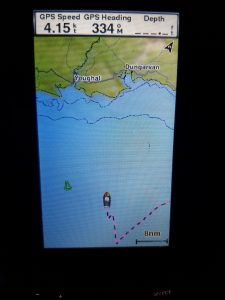
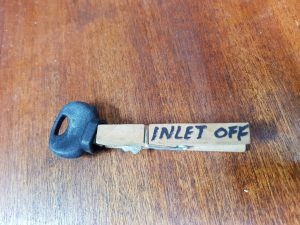
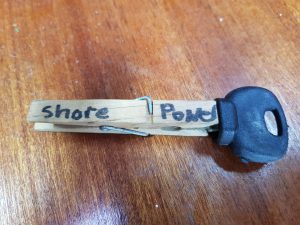
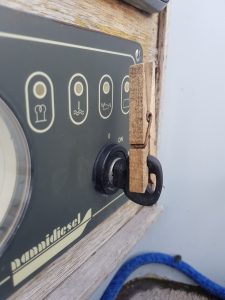

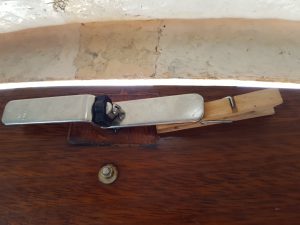
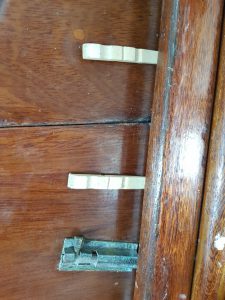


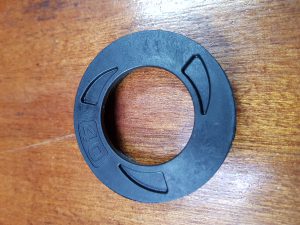



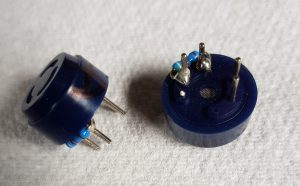

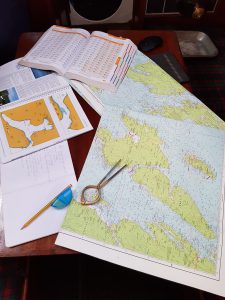 Homework
Homework


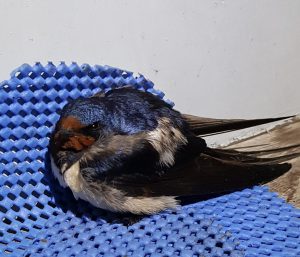

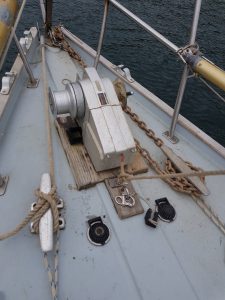
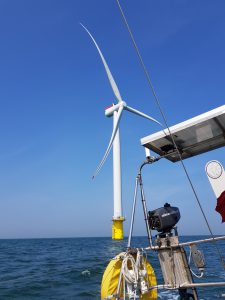
Love your account of being unable to haul up the anchor!
We did have a horrid experience on Rona, two years ago, when we got fouled on the grumpy native’s concrete mooring block. Richard from Shellan, a Dehler 36, and solo I of Man sailor, was a complete star and spent hours in his wetsuit and snorkelling gear, eventually managing to get us free at breakfast time the next day. Giant Carabinier, loads of tripping lines, and every single winch on Ranger loaded to max capacity. And numerous horrid riding turns! Yes we did give him dinner on board, a couple of bottles of wine, and a drink in the pub at Carbost a couple of days later. What a humbling experience!
Duly noted!!! Glad you got the anchor free in the end. And yeah, maybe time to get that windlass fixed. 🙂